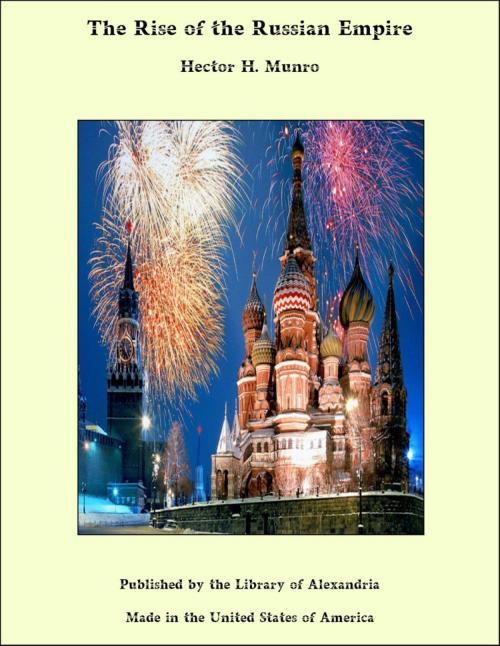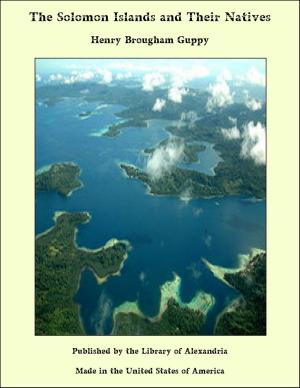The Rise of the Russian Empire
Nonfiction, Religion & Spirituality, New Age, History, Fiction & Literature| Author: | Hector H. Munro | ISBN: | 9781465601988 |
| Publisher: | Library of Alexandria | Publication: | March 8, 2015 |
| Imprint: | Language: | English |
| Author: | Hector H. Munro |
| ISBN: | 9781465601988 |
| Publisher: | Library of Alexandria |
| Publication: | March 8, 2015 |
| Imprint: | |
| Language: | English |
Russia, which is blessed with a rich variety of tribes and peoples, the despair of the ethnographical geographer, who can scarcely find enough distinctive colours wherewith to denote them all on his maps, is characterised by a singular uniformity of physical conditions throughout the greater part of its huge extent. Geographically speaking, it is difficult to determine what are the exact limits of the region known as Russia-in-Europe, the Oural Mountains, which look such an excellent political barrier on paper, being really no barrier at all, certainly not what is known as a scientific frontier. As a matter of fact they are less a range of mountains than a chain of low table-lands, having precisely the same conditions of soil, flora, and fauna on either side of them. Zoologically the valley of the Irtuish forms a much stronger line of demarcation, but much of Russia west of the Ourals coincides more nearly in physical aspect with the great Asiatic plain than it does with the remainder of Europe. Southward and westward from this fancy boundary stretches a vast expanse of salt, sandy, almost barren steppe-land; this gives way in time to large tracts of more or less fertile steppe, partaking more of the character of prairie than of desert, bearing in spring and early summer a heavy crop of grasses, high enough in places to conceal a horse and his rider. Merging on this in a northerly direction is the “black-soil” belt, a magnificent wheat-growing country, which well merits the title of the Granary of Europe. Northward again is a region of dense forest, commencing with oaks and other deciduous trees, and becoming more and more coniferous as it stretches towards the Arctic circle, where pine and fir disappear, and give way to the Tundras, moss-clad wastes, frozen nine months out of the twelve, the home of reindeer and Samoved. Over all this wide extent the snows and frosts of the Russian winter fall with an almost equal rigour, though for varying duration of time. Except on the east, the country possesses strongly-marked natural boundaries; on the south-east rises the huge pile of the Kaukasus Mountains, flanked east and west by the Kaspian and Black Seas respectively; on the south-west lie the Karpathians, while from north-west to north the Baltic is almost connected by lake, swamp, and the deep fissure of the White Sea with the Arctic Ocean. Broadly speaking, nearly the whole area enclosed within these boundaries is one unbroken plain, intersected and watered by several fine rivers, of which the Volga and the Dniepr are, historically, the most important. This, then, is the theatre on which was worked out the drama of Russian national development.
Russia, which is blessed with a rich variety of tribes and peoples, the despair of the ethnographical geographer, who can scarcely find enough distinctive colours wherewith to denote them all on his maps, is characterised by a singular uniformity of physical conditions throughout the greater part of its huge extent. Geographically speaking, it is difficult to determine what are the exact limits of the region known as Russia-in-Europe, the Oural Mountains, which look such an excellent political barrier on paper, being really no barrier at all, certainly not what is known as a scientific frontier. As a matter of fact they are less a range of mountains than a chain of low table-lands, having precisely the same conditions of soil, flora, and fauna on either side of them. Zoologically the valley of the Irtuish forms a much stronger line of demarcation, but much of Russia west of the Ourals coincides more nearly in physical aspect with the great Asiatic plain than it does with the remainder of Europe. Southward and westward from this fancy boundary stretches a vast expanse of salt, sandy, almost barren steppe-land; this gives way in time to large tracts of more or less fertile steppe, partaking more of the character of prairie than of desert, bearing in spring and early summer a heavy crop of grasses, high enough in places to conceal a horse and his rider. Merging on this in a northerly direction is the “black-soil” belt, a magnificent wheat-growing country, which well merits the title of the Granary of Europe. Northward again is a region of dense forest, commencing with oaks and other deciduous trees, and becoming more and more coniferous as it stretches towards the Arctic circle, where pine and fir disappear, and give way to the Tundras, moss-clad wastes, frozen nine months out of the twelve, the home of reindeer and Samoved. Over all this wide extent the snows and frosts of the Russian winter fall with an almost equal rigour, though for varying duration of time. Except on the east, the country possesses strongly-marked natural boundaries; on the south-east rises the huge pile of the Kaukasus Mountains, flanked east and west by the Kaspian and Black Seas respectively; on the south-west lie the Karpathians, while from north-west to north the Baltic is almost connected by lake, swamp, and the deep fissure of the White Sea with the Arctic Ocean. Broadly speaking, nearly the whole area enclosed within these boundaries is one unbroken plain, intersected and watered by several fine rivers, of which the Volga and the Dniepr are, historically, the most important. This, then, is the theatre on which was worked out the drama of Russian national development.















